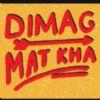MR: Shivkumarji, just recently I came across a very interesting passage in a book that was published in the 1800's.
SS: I see.MR: And it has something pertaining to the times that ragas are performed which I have never heard before. So I wanted to ask you if this is something you've heard of and agree with or perhaps have a different approach to. The passage says that "musicians declare that the times and seasons allotted to each"... ragas we are referring to... "are those at which the divinities are at leisure to attend at the place where their favorite"...it says here "tune is sung"...we could substitute raga for that..."and to inspire the performer with due warmth in his execution."
SS: You see this has been a tradition in our music, especially North Indian classical music. And to follow the time theory, we call it, and this is related with the sunrise to sunset, and from again the circle of sunset to sunrise. And the theory is, the whole idea is that the human body and mind reacts to changes in nature. This is a very Indian thought, that this human body is made up of five elements, that is earth, fire, water, air and space. And whatever happens with the nature, nature consists of all these elements and that reacts on our body and mind. For example, when we see a rising sun the kind of feelings that we experience while watching a rising sun, or before that when its getting...the colors are changing and the darkness is going away, the kind of feeling that it evokes in you is totally different from the moonlight or at noontime.MR: Are these feelings more intense in the country than in the city?
SS: It depends on the environment also because earlier music was not performed in the auditoriums. In the Indian classical music traditions music started from Vedic age more than three-thousand years ago, more than that, and it was outdoor, and especially music was used as a source of meditation, not as an entertainment. MR: For both the performer and the listener. SS: Yes. It became a performing art later on, but originally it was very spiritual. It was used for meditation. It was used for taking a person inward. To calm down, to relax. To be centered at one focal point. So that was the origin of this music. It started with the singing of Vedic hymns and all that. So coming back to this time theory, this is an established fact, that in twenty-four hour cycle of day and night you go through different emotions. If it is warm and its different, if it is raining you will feel different, so what has been done in our music, musicologists combine such phrases of notes which go along with the time cycle. Which in answer, what is there in the nature, because the music was performed outdoors so you can FEEL the change.MR: I see. Now recently I was listening to Rag Marwa...
SS: Uh huh...MR: ...different performances, unfortunately I don't have your recording of that right now, I plan to get it, and I had the feeling that somehow the melodies of this rag had a feeling of falling, of something fading, and I thought, "Oh my God, could this possibly be the sunset?"
SS: Yes.MR: Is that...
SS: Yes. And there are ragas of this type before sunset and after sunset. We call them twilight melodies. And there is a difference in morning twilight and evening twilight. When the sun is about to come its a different kind of feeling. When if it is gone, the day is over, its a different kind of feeling.MR: So what you're saying here is that its something that's very close to the cycles of nature...
SS: Yes.MR: ...but not specifically Gods as is implied here (the passage) where they're talking about "divinities"...
SS: Uh huh...MR: ...or am I misinterpreting the passage?
SS: In that sense when we talk about divinity this music is connected. Music is connected with that but I'm...what I'm talking is... that is nature in this.MR: Of course nature comes from god.
SS: Yes. Its connected, its interrelated.MR: I see. One of my favorite recordings of yours is your recording of morning ragas, Gunkali, Basant Mukhari.
SS: Yes.MR: Now one thing I noticed immediately with Gunkali is a very beautiful tanpura pattern. Is this something you composed yourself, is this something you learned, I've never heard this pattern before, maybe its my lack of experience in this rag.
SS: The rag Gunkali?MR: It goes Ma, Pa, dha, Sa and back (down an octave) to Sa, a very beautiful...
SS: The way the tanpura is tuned. MR: Yes. A very beautiful, a very effective tanpura pattern for this raga. SS: Normally the tanpura is tuned in the tonic, three strings, two strings in the same octave and one played low. And the other string is tuned depending on the rag to the fifth note, fourth note or the seventh note. But I have experimented in this rag. Sometime if you tune the tanpura according to the most prominent phrase of that raga, so as soon as the tanpura is played you get into that mood of that rag.MR: Yes. It's breathtaking. Its so appropriate. So this is your invention. Its fantastic, very effective. To talk in general terms about Gunkali and Basant Mukhari, my overall sensation as to the rasa (mood) for Gunkali is one of love either for god or for a human being and Basant Mukhari sounds to me like a journey or an adventure, like you're traveling somewhere. Would you like to say a few words about how you approach each of these rags or contrast them?
 SS: Its a very interesting aspect of our music. Each...a particular rag could have different kind of emotions in different persons depending on their frame of mind at that particular moment when they are listening to that music, the place where they are listening to that music, the kind of concentration they are having at that time and the temperament of that person. I'll give you an example. Once I was playing in a radio station for the live broadcast. It was in Jammu, my native place, and there were two ladies who were sitting there in the studio, and I was playing Rag Gujri Todi, the rag has got pathos, the feel of the rag is pathos. And there were two different kinds of reactions from two different individuals at the same time. There was one lady, she was a musician, she herself was a singer, and she was sitting there because she was going to perform next. And there was another lady, she did not know music at all, but she had that FEEL for music. So the reaction was, the lady who was a performer, she was nodding her head and she was appreciating and she was gesticulating, "Oh, its wonderful," like that, of course silently, you cannot talk when this is live broadcast, and the other lady was not reacting in any way but there were tears in her eyes. So, the rag is same, melody is same. Two different individuals are reacting differently. And this is a very interesting aspect of our music. And I think this needs a very interesting research could be done on this aspect. What type of music appeals to what type of people. And what type of music one individual likes. From that you can find out what is the temperament of that person.
SS: Its a very interesting aspect of our music. Each...a particular rag could have different kind of emotions in different persons depending on their frame of mind at that particular moment when they are listening to that music, the place where they are listening to that music, the kind of concentration they are having at that time and the temperament of that person. I'll give you an example. Once I was playing in a radio station for the live broadcast. It was in Jammu, my native place, and there were two ladies who were sitting there in the studio, and I was playing Rag Gujri Todi, the rag has got pathos, the feel of the rag is pathos. And there were two different kinds of reactions from two different individuals at the same time. There was one lady, she was a musician, she herself was a singer, and she was sitting there because she was going to perform next. And there was another lady, she did not know music at all, but she had that FEEL for music. So the reaction was, the lady who was a performer, she was nodding her head and she was appreciating and she was gesticulating, "Oh, its wonderful," like that, of course silently, you cannot talk when this is live broadcast, and the other lady was not reacting in any way but there were tears in her eyes. So, the rag is same, melody is same. Two different individuals are reacting differently. And this is a very interesting aspect of our music. And I think this needs a very interesting research could be done on this aspect. What type of music appeals to what type of people. And what type of music one individual likes. From that you can find out what is the temperament of that person.
MR: So the raga reads the person.
SS: Yes. I think this...we can use that.MR: Another favorite recording of mine is your recording of Rageshri with Zakir Hussain on his Moment Records.
SS: Yes. Its a live concert in Calcutta. MR: My overall sensation, if I can reduce it to one thing, to me this has a very strong feeling of the beauty of nature. I feel like I'm out in the mountains somewhere. Its just so pure and beautiful. Is there anything you can say about this raga? SS: I remember this is a live concert recording that I played in Calcutta a few years ago. Basically Rageshri is a late night raga. And it conveys a very happy...a romantic feeling, and when you talk about romance you can feel again about nature, about a human being, or being outdoors somewhere, and secondly the sound of santoor, the kind of sound santoor instrument produces, gives you a feel of flowing water. You are near some spring or some water flowing somewhere. MR: Perhaps that's what I'm referring to. SS: Yes. So that gives you that feeling.MR: Its funny you mention that because someone had asked me to write some program notes for a composition I did based on a raga...
SS: Uh huh...MR: ...and I was trying to think of an analogy, and I thought maybe, perhaps, and this may be a bad cliche, but of snow or the ice (in the mountains)...the alap...melting very slowly, forming a pool of water...
SS: Yes.MR: ...and then you go into the jor and jhalla, the water forms a stream...
SS: Uh huh...MR: ...and keeps on going faster (with waterfalls and rapids) as it goes down towards the ocean. So this concept of the santoor sounding like water, is this something your father taught you when he was teaching you music or is it something you realized later on? SS: No, while playing I realized. I played it like that when I play this instrument. MR: Fantastic. One thing that is very important, of course, in Indian music, and is one of the many great things about your music, the continuity, the way the rag develops, it keeps on developing until it ends...
SS: Um hum.MR: Are there any...this is probably not an easy question to answer in a few words, but are there any principles that you could say in terms of...to maintain the continuity of the raga, the form of the raga...
SS: Um hum...MR: ...it grows organically, it makes sense as a whole. Because sometimes you'll play a raga, in the USA I have not heard ragas played for more than an hour, but I imagine in India perhaps you'll play one for two hours.
SS: Yes.MR: Have you played one for more than two hours?
SS: Yes.MR: One raga?
SS: Yes.MR: Is there anything you can say about how to...you achieve this continuity and the overall form?
SS: I think this is the basic character of our raga system. That is how we are trained. This music is not instant fast-speed music. We gradually create the images of the rag. I would compare it like a painting. An artist is sitting in front of you and creating a big...images of...a painting. And gradually it emerges. It takes time. And it takes time even if its a portrait, for example.MR: Very interesting analogy.
SS: And it will gradually...it will emerge in front of you. Then you can make out of him, or you can see the features of the person. You can see the eyes, you can see the nose, you can see the lips...then the whole picture emerges in front of you. I think the improvisation of a rag also is like that. Its a musical painting that we are doing. And then a musician is trained in such a way in Indian classical music. The ability of the musician, his creativity is noticed by the way a musician will unfold a rag and gradually bring it out in different colors, and then in full bloom. So that means a lot of experience also.MR: So first you suggest the melody before you reveal it in all its...
SS: Yes. And then first there is alap and there is no tempo, its totally free of tempo, and gradually there is a beat and tabla joins later on. And further there are other images coming, other colors coming, and then total picture comes across.MR: I see. Another thought I had, because I heard some musicians say that they regard the raga as a living entity...
SS: Yes.MR: ...as a spirit or a god or something... so it occurs to me sometimes that the alap is almost like you're conjuring the rag or waking it from sleep...
SS: Yes.MR: ...and then when you enter the jor you have contacted the rag and it has come alive.
SS: Yes. That's beautiful.MR: Would you ever think of it that way?
SS: Yes, yes. You know Art is...has got unlimited possibilities of imagination. And this is a creation which each individual person can add something to that and interpret in his own ways, ad infinitum.MR: From what I've understood, Indian music has undergone some fairly dramatic or major changes in this century, and one of my favorite musicians, who I seem to appreciate more the more I learn is Pandit Ravi Shankar, and what I've understood is that some of the innovations he brought was to, for one thing, allow the tabla player greater prominence.
SS: Yes.MR: Perhaps also in his playing, more of an emphasis on pure rhythm even though its a melodic instrument. Perhaps this is something he got from his guru because I heard a rare recording of his guru and it was very rhythmical playing on the sarod.
SS: Yes.MR: And of course when you go into a faster tempo you have fantastic rhythm. In fact, I've never heard a sense of time which is so perfect to me when you are just playing by yourself without a tabla. The time, I've never heard it sound so perfect. Has Pandit Ravi Shankar been an influence on you? Or is this just something (a greater emphasis on rhythm) which is happening in the world. Of course he's older than you, a different generation.
SS: Let me tell you, Pandit Ravi Shankar ( Sharma's voice takes on a tone of awe and reverence here) is a musician who has totally given a new interpretation to the presentation of instrumental music. As you were saying, he was probably the first person, I would use this word, that...who had this generosity and courage to give so much importance to a tabla player. Because he is par excellence as far as the rhythmic patterns are concerned. As far as the intricacies of the different rhythmics cycles like nine beats, thirteen beats, fifteen beats. It was not earlier used mostly by the instrumentalists. And he did that, although there were vocalists doing that. And there were Drupad singers who were singing in different rhythmic cycles but not the instrumentalists. And Pandit Ravi Shankar did all that. Now as far as my thing is concerned, he is my senior, and I in fact, when I was very young, I played tabla with him.MR: Oh you did! I didn't know that!
SS: (laughs) A few times. A few times I played tabla with him when he came for the first time to Jammu to perform for radio station. I was booked to accompany him on the tabla. I used to play tabla also.MR: Right. I've heard that.
SS: Now why and how I have done this. My father was a vocalist. My father was not an instrumentalist. And he was a vocalist of Benares tradition. He was a disciple of Pandit Bade Ramdasji of Benares who was a very, very respected musician, a very well known musician. And he taught me something. And he used to sing in different, odd rhythmic cycles. Different type of compositions, taranas, which I learned from him and I tried to reproduce same things on the santoor. At the same time, when I was very young, of course, I was exposed to the music of Pandit Ravi Shankar, Ustad Ali Akbar Khan, Ustad Vilayat Khan, Ustad Allaudin Khansab, his guruji...MR: Hearing them live.
SS: Yes. I heard all of these musicians and many more other musicians. So what a musician does is...now my instrument was totally different. I was not playing sitar and I was not playing sarod. So you could not incorporate something from these artists exactly on your instrument. I had to create the character of my instrument on my own. What is so different for this instrument, what goes well with this sound and the technique of santoor playing which is totally different. Santoor is the only instrument, a stringed instrument which is played with the mallets. There is no other instrument like that. And, of course, I heard all beautiful music from these great masters. And what inspired me from listening to these great masters, I in my own way, tried to give it my own interpretation, how it could be used on the santoor. And that is what I am doing. And I'm trying to balance. I don't give...sometimes there are musicians who have got more interest in the rhythmic intricacies. And there are others who are more interested in melodic form. I am trying to balance both. I'm of the opinion that the intricacy of the tal should not be at the cost of the melody. I would never sacrifice melody for the sake of intricacies of rhythm. That is my personal thinking. And at the same time, I would try to attempt whatever difficult thing is possible balancing both of these, balancing melody and rhythm. I might play an odd rhythmic cycle of nine beats, eleven beats, thirteen beats, fifteen beats, but I will use those syncopations of rhythm in melodic form, that melody is not lost. I'm trying to do that, it is very difficult.MR: Well, you've succeeded, yes. One personal question: Do you perform Darbari or Jaijaivanti?
SS: I...no...MR: I'm not aware of any recordings of these two rags.
SS: I have recently...I have no recording in Jaijaivanti and Darbari, but recently I played a concert where I played Darbari in Bombay. I don't know whether it will be released or not. It depends on future...MR: Because when I personally take an interest in a particular raga I like to hear your interpretation because...
SS: OK, maybe sometime... (laughs)MR: ...it is definitive and very beautiful.
SS: Sometime, thanks, it would be a good thing. I think a person can know hundreds of ragas theoretically, but to play them practically and not just to play, as you said, to create that image of the rag in front of you as a human being, that requires a lifetime's concentration, riaz, dedication, practice and thinking. And then you can be able to grasp certain command over few ragas. It takes a lot of patience.MR: Thank you very much.
SS: Nice job.











comment:
p_commentcount